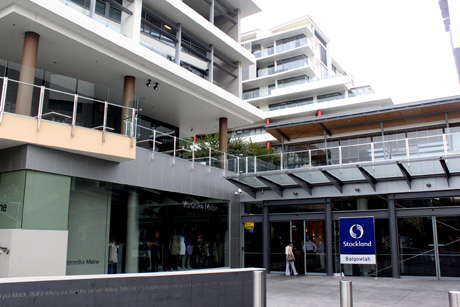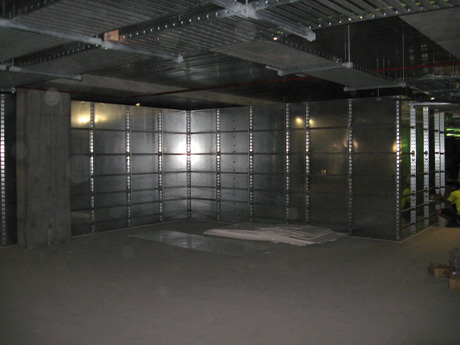The recent Stockland Village project, a multi-million dollar 240-apartment and shopping centre complex in the Sydney suburb of Balgowlah has used an innovative tank storage system that makes great use of space.
With space within new-generation industrial and commercial buildings at an ever-increasing premium, innovative and flexible storage tank systems are important in taking advantage of every square metre of available space.
Frank Hull, technical manager for Wormald (provider of fire protection solutions), designed a fire sprinkler system for the whole complex, specifying water storage tanks from the The Tasman Tank Co.
The Tasman Tank company produces tanks in traditional shapes and engineers them to fit around columns and other obstacles to optimise use of available space.
“Because the building was already built, we only had a few options for the limited space we had to work with,” Hull said.
Due to the flexibility of the Tasman Tanks’ storage tanks, the company was able to squeeze in a stainless steel L-shaped bolted panel tank of the required capacity within the concrete structure envelope that was there; between the building columns.
Hull explained that as well as access problems there was also limited headroom to work with.
“So we had to sit the storage tank directly on the floor. There was no room for beams underneath it. But due to the flexibility of the tank system, we were able to take up all the available space.
“For access to the tank for maintenance, for example, Tasman Tanks designed an innovative top panel that could be removed from the wall of the tank when needed. That’s how tight it all got,” he said.
Describing the project as one of his ‘normal’ difficult projects, Hull said he was very pleased with Tasman Tanks’ professionalism and the quality of their work.
“They did a good job on that project, with the tank constructed on time. It worked out well,” he said.
Ron McEvoy from Tasman Tanks said the stainless steel bolted storage tank used, model TS185, was a little bit more expensive than galvanised tanks, “but they have a longer life and don’t need internal membranes”.
“Instead they use a stay rod system to hold the tanks together from side to side,” McEvoy said.
He explained that a welded tank was not an option on this project because they had to be built around columns and fit into a confined area.
“Access was also a major problem with this project. All the tank components were designed in small enough sections to fit through a standard doorway,” he said.
McEvoy explained that space is at a premium in all modern buildings. “If they can’t get the required water into a proposed area, they have to go in deeper, which creates a whole new range of problems, and costs.
“The benefit of using the Tasman Tank bolted panel tank is that instead of being limited to set dimensional increments, we can make them I any configuration to get the maximum use of the area you have to store the water.
“If you use a round tank, you lose about 25 per cent of the planned area; a circle against a square area.
“With a square bolted tank, you have the advantage of picking up more volume in the available area whilst juggling the tank heights to conform with AS/NZS3500, which calls for a range of allowances including vortexes, air gaps and spill levels.
He said companies who have difficult locations to contend with should talk to experts in this area. “Tasman Tanks recognises that commitment to innovative and cost-efficient design with a quality product is key to customer satisfaction. ?
“We strive to achieve this by designing and manufacturing in-house. We pride ourselves on our diverse range of quality products and our field installation capabilities, therefore being able to offer clients the best possible results for their specific tank requirements,” McEvoy explained.
He said bolted steel tanks have steadily overtaken alternatives because they are less expensive to build in the first place, easier to maintain and typically outlast alternative materials anyway.




